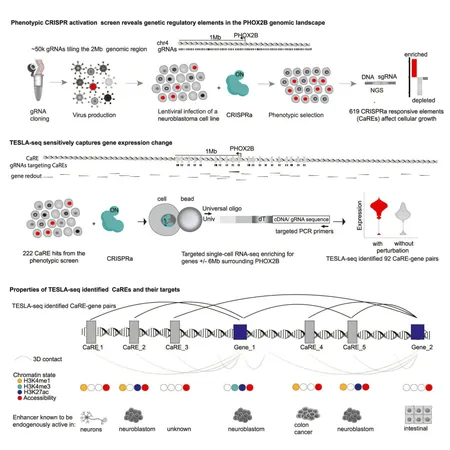
Revolutionary Technique Uncovers Hidden Gene Switches Faster Than Ever!
2025-09-09
Author: Yu
Unlocking the Secrets of Our DNA
Researchers at the prestigious Max Delbrück Center have made a groundbreaking discovery—an innovative method that uncovers the elusive "switches" that regulate our genes at lightning speed! This remarkable technique, detailed in the latest edition of Cell Genomics, reshapes how we understand the intricate control of DNA.
Did you know that most of the human genome comprises regions that don't code for proteins? Instead, these mysterious stretches of DNA, known as transcriptional enhancers, govern crucial functions like gene activation—acting as switches that dictate when and how strongly a gene is expressed.
The Hidden Dangers of Genetic Defects
Despite their importance, defects in these regulatory elements can lead to serious developmental issues and diseases. Identifying them is a Herculean task, as they often lurk far from the genes they influence and lack a clear genetic code.
Introducing TESLA-seq: A Game-Changer in Genomics
Led by the brilliant Dr. Dubravka Vučićević, a team in Professor Uwe Ohler's Computational and Regulatory Genomics lab has unveiled a powerful tool named the targeted single-cell activation screen (TESLA-seq). This cutting-edge approach synergizes CRISPR-based gene activation and targeted single-cell RNA sequencing, significantly improving the speed and accuracy of identifying regulatory regions.
"With this method, we can test thousands of candidate regulatory elements in the genome to see how they can switch genes on, revealing their exact influence," Dr. Vučićević explained.
Mapping the Gene Landscape: A Closer Look at PHOX2B
To demonstrate the technique's prowess, the team examined the PHOX2B gene, essential for nervous system development. Mutations in this gene have been linked to neuroblastoma, a devastating cancer affecting children.
The researchers designed 46,722 guide RNAs (gRNAs) targeting the expansive region surrounding PHOX2B, probing for potential regulatory switches. By transferring these gRNAs into single human neuroblastoma cells, they activated hidden regulatory regions, identifying over 600 CRISPRa-responsive elements (CaREs) that dramatically altered cell growth.
Connecting the Dots: Genes and Regulatory Elements
Delving deeper, the team focused on around 200 CaREs and utilized single-cell RNA sequencing to connect these elements to more than 70 nearby genes. Surprisingly, many CaREs influenced distant genes, often bypassing those right next door—something overlooked by previous methods.
"TESLA-seq not only provides insights into one cell type but reveals potential interconnections between genes and regulatory regions across various biological systems," Ohler remarked.
Why This Matters: Implications for Disease Understanding and Treatment
This research holds monumental significance, especially since many diseases do not confine themselves to a single tissue type, as Vučićević noted. With TESLA-seq, the future of disease understanding and treatment is bright, promising revolutionary strides in genetic research and personalized medicine.




 Brasil (PT)
Brasil (PT)
 Canada (EN)
Canada (EN)
 Chile (ES)
Chile (ES)
 Česko (CS)
Česko (CS)
 대한민국 (KO)
대한민국 (KO)
 España (ES)
España (ES)
 France (FR)
France (FR)
 Hong Kong (EN)
Hong Kong (EN)
 Italia (IT)
Italia (IT)
 日本 (JA)
日本 (JA)
 Magyarország (HU)
Magyarország (HU)
 Norge (NO)
Norge (NO)
 Polska (PL)
Polska (PL)
 Schweiz (DE)
Schweiz (DE)
 Singapore (EN)
Singapore (EN)
 Sverige (SV)
Sverige (SV)
 Suomi (FI)
Suomi (FI)
 Türkiye (TR)
Türkiye (TR)
 الإمارات العربية المتحدة (AR)
الإمارات العربية المتحدة (AR)